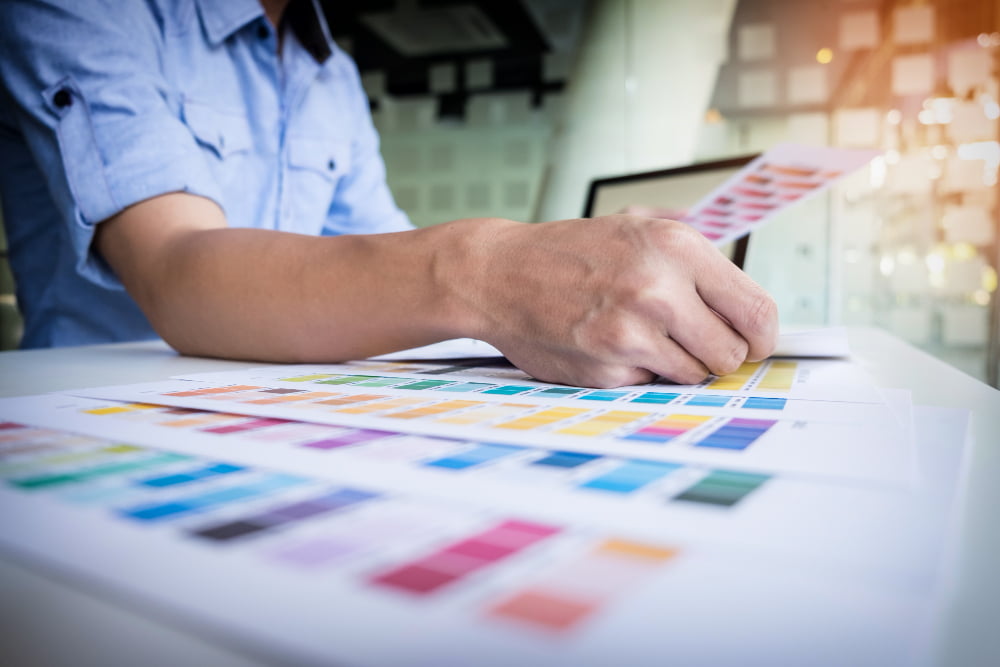Personalizing Your Printed Items: Tips for Memorable and Unique Branding
Even in our modern digital era, where many things are shifting online, there’s an undeniable charm in printed materials when it comes to branding. A beautifully crafted brochure, business card, or promo flyer offers a tangible touchpoint that can resonate deeply with your audience. But with so many print materials out there, how do you make yours stand out? The answer is personalization. In this post, we’ll dive into how customizing your printed materials can forge a distinctive and unforgettable brand presence.
The Power of Personalization
Personalization is all about tailoring your printed materials to connect with your target audience on a personal level. It’s about making your audience feel special, valued, and understood. When done right, personalization can significantly boost your brand’s recognition and customer loyalty, whether printing on packaging, labels, badges, clothing… anything! So, how can you effectively personalize your printed items? Let’s dive in!
1. Know Your Audience
Before you can personalize your printed materials, you need to understand who your audience is. What are their preferences, interests, and pain points? What problems can your products or services solve for them? Conduct market research and create detailed buyer personas to gain a deeper insight into your audience.
2. Craft a Unique Brand Identity
Your brand identity is the foundation of personalization. It includes your brand’s logo, colors, typography, and overall style. Make sure your brand identity is distinctive and aligned with your target audience’s tastes. Once you’ve established a strong brand identity, it becomes easier to personalize your printed items within that framework.
3. Custom Typography
Typography plays a significant role in personalization. Consider using custom fonts or typography that resonates with your audience. The right font can convey the personality and values of your brand. Whether it’s a playful script font for a children’s clothing store or a sleek, modern font for a tech company, typography helps set the tone for your printed materials.
4. Personalized Messaging
Tailor your messaging to speak directly to your audience. Use language that resonates with them and addresses their specific needs and desires. Avoid generic copy and focus on crafting compelling, personalized messages that evoke emotions and spark interest.
5. Variable Data Printing (VDP)
Variable Data Printing is a powerful tool for personalization. It allows you to print unique information on each individual piece, such as names, addresses, or personalized offers. VDP can be particularly effective for direct mail campaigns, event invitations, and personalized thank-you notes.
6. Unique Graphics and Imagery
Choose visuals that align with your brand and speak to your audience. Consider using custom illustrations or photography that reflects the essence of your products or services. High-quality, unique graphics can set your printed materials apart from the competition.
7. Consider Paper and Finish
The choice of paper and finishing options can greatly impact the look and feel of your printed items. Opt for high-quality paper that matches your brand’s image. Experiment with finishes like matte, gloss, or textured to create a tactile experience that leaves a lasting impression.
8. Personalized Promotions
Include personalized promotions or discounts in your printed materials. For example, send exclusive offers to loyal customers or tailor promotions based on past purchase history. Personalized incentives can encourage repeat business and brand loyalty.
9. Interactive Elements
Make your printed materials interactive to engage your audience further. Consider including QR codes that lead to exclusive online content, augmented reality features, or even simple puzzles and games. Interactive elements add an element of surprise and delight to your printed items.
10. Test and Iterate
Don’t be afraid to test different personalization strategies to see what works best for your audience. Collect feedback, measure the impact of personalized campaigns, and make adjustments accordingly. The key to successful personalization is continuous improvement.
Wrapping It Up
Giving your printed materials a personal touch isn’t just about aesthetics—it’s about crafting an unforgettable brand story. By personalizing, you reach out to your audience in a way that makes them feel seen and cherished. Understand who they are, design a distinct brand persona, and employ techniques like custom fonts, variable data printing, and engaging features to truly differentiate your materials.
But here’s the thing: personalization isn’t a one-and-done deal. It’s a journey. Keep refining your approach, gauging its impact, and tweaking based on feedback. By doing so, your printed content won’t just be materials but bridges—connecting you with your audience, amplifying brand visibility, and nurturing lasting relationships. So, embrace that personal touch, even in our tech-driven age. It’s your golden ticket to leave a mark amidst the digital noise.




